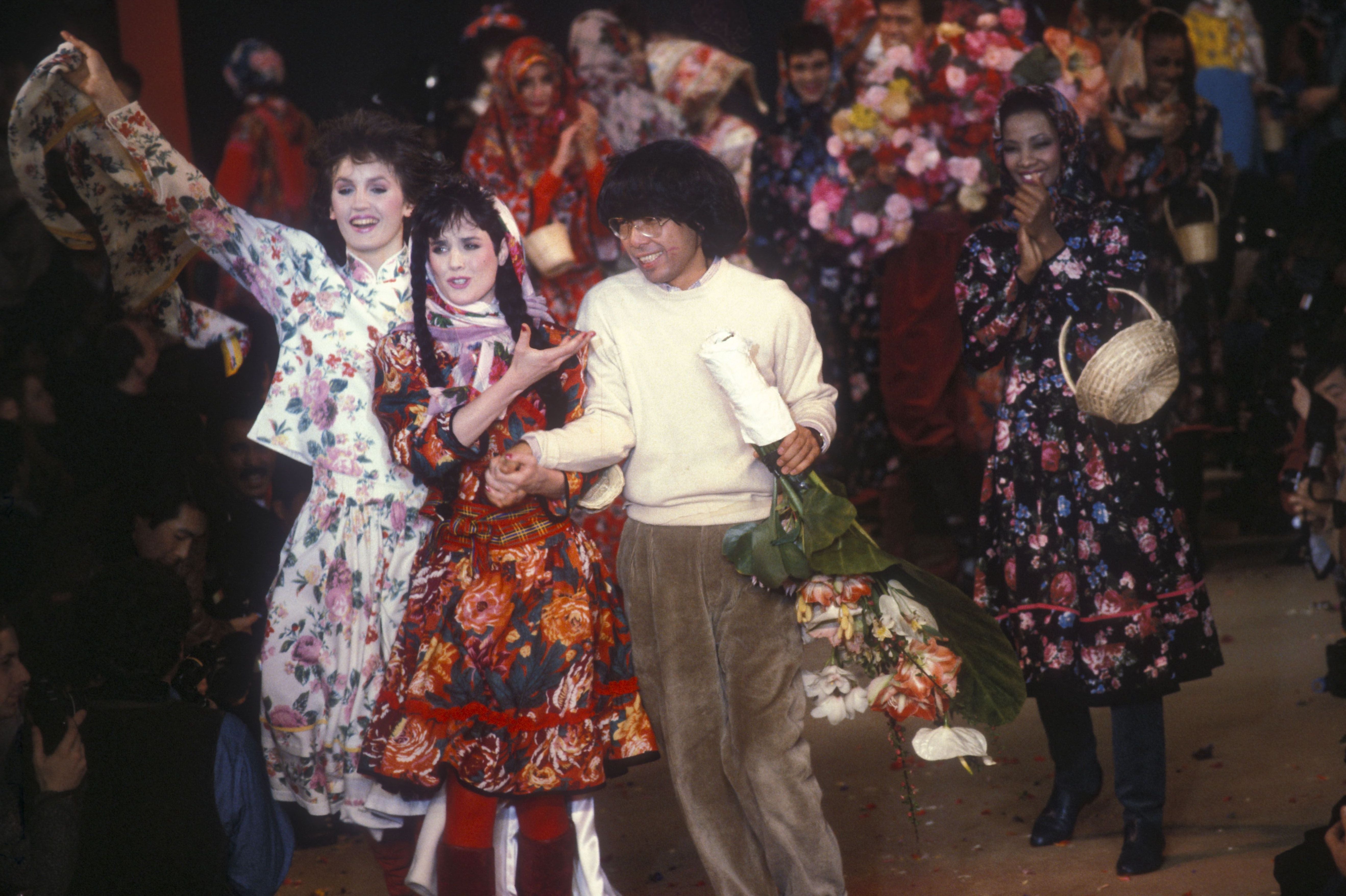Kenzo: How the Japanese fashion brand found success
Founder Kenzo Takada died from coronavirus on 4 October


“Fashion is not for the few — it is for all the people,” said Kenzo Takada in 1972. “It should not be too serious.”
This week, the fashion world has been in mourning after it was announced that Mr Takada – the founder of luxury Japanese fashion house Kenzo – had died aged 81 after contracting coronavirus.
In a statement, the brand described Mr Takada as having an “emblematic personality” and as a person who “infused creativity and colour into the world”. Meanwhile, an outpouring of love on social media, which included tributes from the likes of supermodels Naomi Campbell and Pat Cleveland, as well as critic Suzy Menkes, so clearly demonstrated the lasting impact he had on the world of fashion.
“I remember him…telling me that he wanted to make ‘happy’ clothes,” Menkes wrote. “That meant colourful, with a freedom for the woman’s body – and an international attitude way before his time.”
Born in Himeji, Japan, in 1939, Mr Takada’s reputation as a trailblazer started from a young age, as he became one of the first male students to attend Tokyo's Bunka College of Fashion in 1958. After graduating, he went on to work for a department store in the city and then for a magazine, before he decided to take a leap and move to Paris in 1965, where he set himself up as a freelance designer.
While he might have been virtually penniless, Mr Takada brought a wealth of tastes and traditions from his native Japan to Parisian fashion, where revered couture houses, such as Dior and Chanel, ruled. At this time, the designer’s smock tent dresses, vibrant use of colour and Eastern-inspired shapes were far removed from the old-fashioned milieu of the traditional French fashion house but they seemingly struck a chord with those in pursuit of pieces that defied the prevailing status quo.
The designer made his first collection out of the only material he could afford and mixed the prints together, creating a patchwork of florals, stripes, checks and graphics – a look which later became his signature aesthetic, together with a blend of tradition and exoticism.
Mr Takada's “big break” finally came when he held his very first fashion show in 1971, to which just 20 people were invited, including the editor-in-chief of Elle magazine, who liked the collection so much she ran it on the front cover.
The collection also featured in American Vogue, where his designs were slated as the next big thing in the Paris boutique scene and by the middle of the 1970s, Kenzo’s had infiltrated the Parisian fashion hierarchy, hosting stadium-sized shows that were besieged by fans and attended by glamorous guests such as Bianca Jagger.
During this time, Mr Takada also forged the concept of headline-grabbing fashion shows with his 1979 spectacle that was held in a circus tent and ended with women dressed in transparent outfits riding horses and the designer himself perched atop an elephant.
All the while, old-school French houses continued to show couture on straitlaced models gliding around hushed salons.
It was this sense of innovation and experimental use of volume, print and colour that did not conform to gender stereotypes, which led to Mr Takada becoming known as one of ready-to-wear's early pioneers and cemented the brand’s position as one of the most influential labels of the fashion landscape.
Kenzo’s ascent in the sartorial ranks was also the catalyst for a succession of Japanese designers in Paris, including Issey Miyake, Kansai Yamamoto and Rei Kawakubo, all whom have gone on to become hugely influential in the past half century.
Over three decades, Kenzo went on to expand into menswear, jeans, childrenswear, homewear and fragrances. But then, in the 1990's the brand saw its biggest change, as Mr Takada made the decision to retire from his fashion house to pursue a career in art.
In 1993, he sold the brand to LVMH for around $80 million and exited altogether in 1999, with Gilles Rosier tapped to assume creative direction of womenswear and Roy Krejberg as men’s director.
Mr Takada’s departure triggered several years of floundering for the brand, until 2003 when Antonio Marras took the helm and steered Kenzo into a more refined and feminine direction.
More recent successors include design duo Carol Lim and Humberto Leon, who set out to modernise the brand by launching Kenzo’s next emblem – a graphic tiger that was previously stitched on the inside of wristbands, bags and watches under Mr Takada’s direction.
The reimagined Kenzo tiger first made an appearance on knitted jumper as well as, for the first time in the brand’s history, a sweatshirt, which became an immediate sell out. The couple were praised for once again creating a cult-like desirability for all things Kenzo, before they too stepped down from their roles and made way for Felipe Oliveira Baptista, the brand’s current creative chief.
That the Mr Takada’s death came at the tail end of Paris Fashion Week, which is currently hosting an atypical season for spring/summer 2021 due to the coronavirus pandemic, feels somewhat symbolic.
Despite stepping down from the label 40 years ago, he remained one of the most respected figures in the fashion industry and his influence on contemporary young designers still goes on today, as many strive to embody the same joyful attitude and irreverent humour that made his collections so recognisable during Kenzo’s early years.
“His amazing energy, kindness, talent and smile were contagious,” said Baptista, who unveiled the brand’s latest bee-themed collection on Wednesday. “His kindred spirit will live forever.”


Join our commenting forum
Join thought-provoking conversations, follow other Independent readers and see their replies
Comments